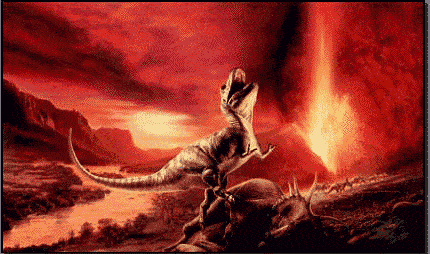It wasn’t just a devastating asteroid that killed off all the dinosaurs 65 million years ago. Scientists from Boston University now claim that a massive eruption of lava fronts around the world, coinciding with the asteroid impact, sealed their fate forever.
The controversial theory is betting on two unusually hot blobs of mantle 1,700 miles beneath the crust that formed just after Earth itself, 4.5 billion years ago. These mantle stores are responsible for huge amounts of lava gush from the bowels of the Earth, flooding more than 100,000 square kilometres, leaving behind distinct geological regions known as large igneous provinces (LIPs).
Matthew Jackson at Boston University and his team found 62-million-year-old basalts from the North Atlantic LIP contain isotopes of elements in ratios that reflect the chemistry of early Earth’s mantle. The scientists claim that this is hard evidence supporting the supposed fact that LIPs are fed by the 4.5-billion-year-old stores of mantle.
“There is an amazing correlation between mass extinctions and LIPs,” Andrew Kerr at the University of Cardiff says.
These ancient magma stores might actually be still active to this day. Using seismic waves to probe the mantle’s structure, scientists found two unusual areas some 2800 kilometres down, beneath Africa and the Pacific Ocean.
“It’s an interesting idea – that a giant blob of hot magma might burp from near Earth’s core every now and then, causing havoc for life,” says Gerta Keller at Princeton University, but adds more work is needed to support the hypothesis.
The researchers themselves also admit that they can perfectly understand why this theory can be considered highly controversial, however they believe it’s still highly plausible.










